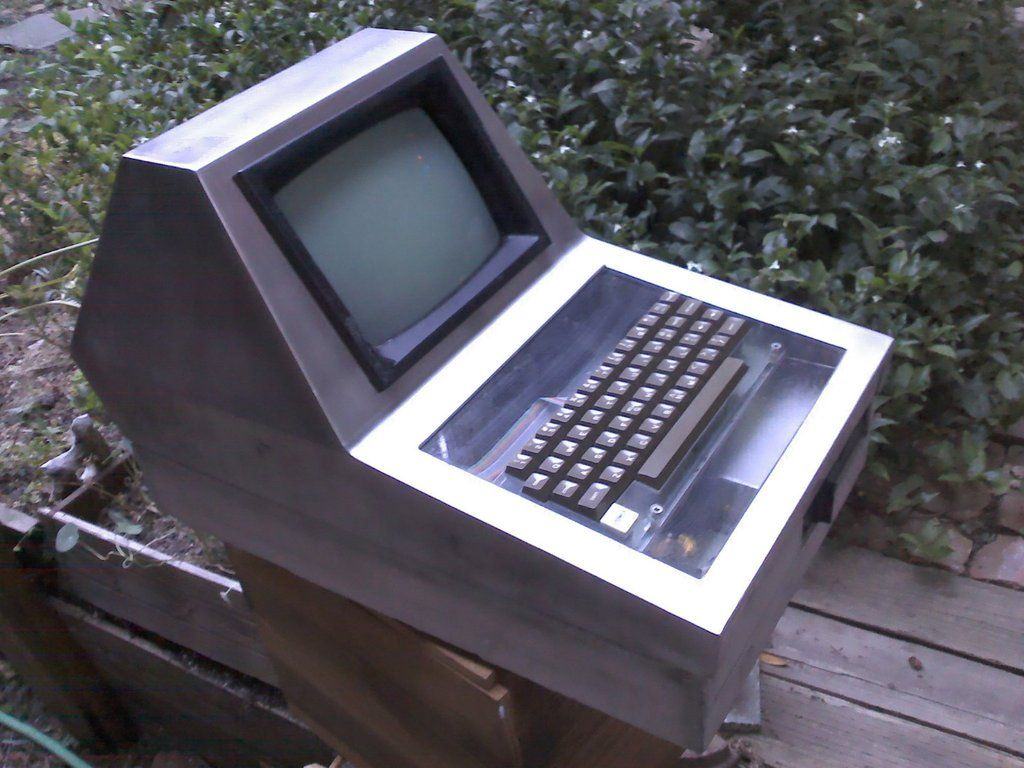Table Of Content
The result is that the position, size, and intensity of a series of pulses define color information. These pulses can translate into pixels on the computer screen, with the possibility of exploiting composite artifact colors. With a few small-scale logic chips and a cheap PROM (programmable read-only memory), he created a functional floppy disk interface at a fraction of the component cost of standard circuit configurations.
Programming languages
A History of Gaming Platforms: The Apple II - Game Developer
A History of Gaming Platforms: The Apple II.
Posted: Wed, 30 Jan 2008 08:00:00 GMT [source]
It was one of the first successful mass-produced microcomputer products, and it played a significant role in the early development of the personal computer industry.[3] It has an 8-bit microprocessor. By the end of 1977 Apple had sales of $775,000 for the fiscal year, which included sales of the Apple I. This puts Apple clearly behind the others of the "holy trinity" of the TRS-80 and Commodore PET, even though the TRS-80 was launched last of the three. [45] However, during the first five years of operations, revenues doubled about every four months.
Teapot series tests
He was born and raised in Southern California and attended Saint Mary’s College of California. “One of my reactions was, ‘Wow, I don’t know who that instructor is, but I hope they’re not reading the news now and thinking about how they sold it for $600,’” said Steve Siedschlag, a computer science professor at Chaffey. Siedschlag and his colleagues have so far been unsuccessful in identifying the professor. But the Chaffey unit is made unique, and possibly more valuable, by its koa wood case, its accessories and its provenance, Cohen said.
References
Cohen has made a career of examining, authenticating and refurbishing Apple-1 units for auction houses and others and was called in by John Moran to do the same. The first 1,000 or so Apple IIs shipped in 1977 with a 68-page mimeographed "Apple II Mini Manual", hand-bound with brass paper fasteners. This was the basis for the Apple II Reference Manual, which became known as the Red Book for its red cover, published in January 1978. All existing customers who sent in their warranty cards were sent free copies of the Red Book. The Apple II Reference Manual contained the complete schematic of the entire computer's circuitry, and a complete source listing of the "Monitor" ROM firmware that served as the machine's BIOS. The Apple II (stylized as apple ][) is an early personal computer that was created by Apple Inc.
Original Apple IIs had jumper switches to adjust RAM size, and RAM configurations could be 4, 8, 12, 16, 20, 24, 32, 36, or 48 KiB. The three smallest memory configurations used 4kx1 DRAMs, with larger ones using 16kx1 DRAMs, or mix of 4-kilobyte and 16-kilobyte banks (the chips in any one bank have to be the same size). The early Apple II+ models retained this feature, but after a drop in DRAM prices, Apple redesigned the circuit boards without the jumpers, so that only 16kx1 chips were supported. A few months later, they started shipping all machines with a full 48 KiB complement of DRAM. The coarse, low-resolution graphics display mode works differently, as it can output a pattern of dots per pixel to offer more color options. These patterns are stored in the character generator ROM, and replace the text character bit patterns when the computer is switched to low-res graphics mode.
Because of that Soviet developers preferred native mode over "Apple II" compatibility mode. A 6502 assembler was soon offered on disk,[33] and later the UCSD compiler and operating system for the Pascal language were made available. The Pascal system requires a 16 KiB RAM card to be installed in the language card position (expansion slot 0) in addition to the full 48 KiB of motherboard memory. Disk users normally purchased a so-called Language Card, which had Applesoft in ROM, and was located below the Integer BASIC ROM in system memory. The user could switch between either BASIC by typing FP or INT in BASIC prompt. Apple also offered a different version of Applesoft for cassette users, which occupied low memory, and was started by using the LOAD command in Integer BASIC.
Between September 1977 and September 1980, annual sales grew from $775,000 to $118 million.[46] During this period the sole products of the company were the Apple II and its peripherals, accessories, and software. Although it sold well from the launch, the initial market was to hobbyists and computer enthusiasts. Sales expanded exponentially into the business and professional market, when the spreadsheet program VisiCalc was launched in mid-1979. VisiCalc is credited as the defining killer app in the microcomputer industry.
“A lot of people just want to know what kind of a person collects Apple-1 computers and it’s not just people in the tech industry,” Cohen said. On Tuesday, John Moran Auctioneers will auction off a functioning Apple-1 computer hand-built by Steve Wozniak, Steve Jobs and others in a Los Altos, Calif., garage in 1976. The system was the rock upon which the trillion-dollar Apple empire was built. Some commercial Apple II software booted directly and did not use standard DOS disk formats. This discouraged the copying or modifying of the software on the disks, and improved loading speed.

Early Apple IIs were often sold with a Sup'R'Mod, which allowed the composite video signal to be viewed in a television. Apple added vent holes to the case within three months of production; customers with the original case could have them replaced at no charge. He previously wrote for the USA Today network of newspapers including the Ventura County Star, where he covered the Thomas and Woolsey wildfires and the Borderline mass shooting, the Spectrum & Daily News in Utah and the Lansing State Journal in Michigan.
Early Apple II games from the 1977–79 period often ran only in text or low-resolution mode in order to support users with small memory configurations; HGR not being near universally supported by games until 1980. When the color burst reference signal is turned on and the computer attached to a color display, it can display green by showing one alternating pattern of pixels, magenta with an opposite pattern of alternating pixels, and white by placing two pixels next to each other. Blue and orange are available by tweaking the pixel offset by half a pixel-width in relation to the color-burst signal. The high-resolution display offers more colors by compressing more (and narrower) pixels into each subcarrier cycle.
Cohen said the unit was not in “bad condition” when he examined it, although the keyboard required complete rebuilding. About 200 Apple-1 units were assembled by Wozniak, Jobs and others, 175 of which were sold. About 60 Apple-1 units still exist, Cohen said, with only about 20, including the Chaffey unit, capable of functioning. Follow a container of board games from China to St. Louis to see all the delays it encounters along the way. The unit is dubbed the “Chaffey College Apple-1” because its first owner was identified as a Chaffey professor.
The wood-frame house has a side-facing gable roof with clapboard siding over diagonal sheathing. The 29-kiloton Apple II test occurred on 5 May 1955; the house stood within 8,000 feet of ground zero. Although the building appears to be in relatively good condition, damage from the blast is clearly visible. The windows were blown out and the upper portion of the brick chimney has shifted slightly. Nearby is another house built for Apple II, identical in form except for its brick veneer.
The text mode and low-res graphics mode use the same memory region and the same circuitry is used for both. Color on the Apple II series uses a quirk of the NTSC television signal standard, which made color display relatively easy and inexpensive to implement. Color was added later by adding a 3.58-megahertz subcarrier signal that was partially ignored by black-and-white TV sets. Color is encoded based on the phase of this signal in relation to a reference color burst signal.

No comments:
Post a Comment